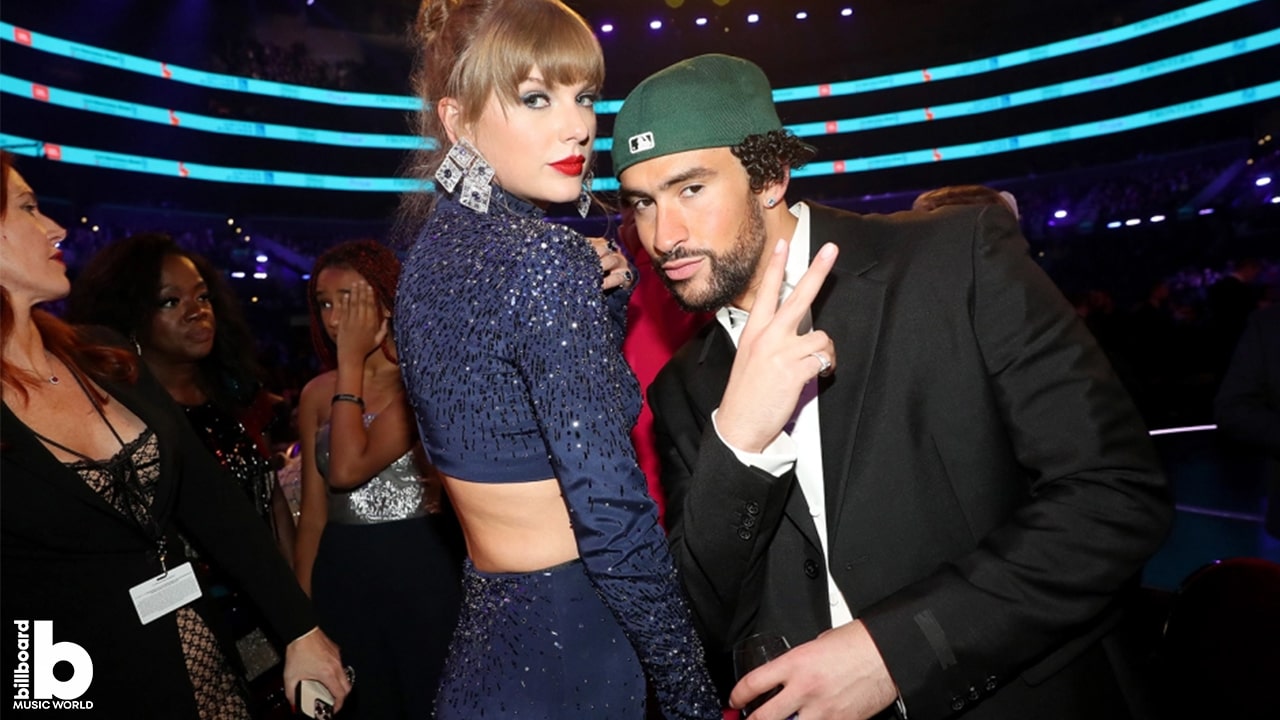Sunday night at 8:00 p.m. ET, one tweet captured the moment perfectly: “Taylor Swift dancing while Benito sings is what you didn’t know you needed to see.”

What Latin music fans have long known the world really needed to see was Latin artists performing en español at the Grammys. Bad Bunny — real name Benito Antonio Ocasio Martínez — stepped into the moment in magnificent fashion, not simply performing a medley of songs, but opening the show with a painstakingly detailed and exhilarating homage to his native Puerto Rico and the Dominican Republic. Tradition and culture were presented in the form of dances, dancers and imagery — including the eye-popping cabezones (or big heads) representing icons like rapper Tego Calderón and the late poet and independence advocate Julia de Burgos, not household names for American audiences, but ones worth their time to read about. Musically, Bad Bunny managed to traverse a broad gamut of genres, initially singing while accompanied by Puerto Rican pleneros — and later, by the 10-piece band of Dahian “El Apechao,” from the Dominican Republic.
It could not have been more local. And yet, it could not have been more universal, a brilliant example of how regional music can have international appeal and cross boundaries of tradition and language if executed convincingly — and, as Bad Bunny so emotionally articulated, “with love.”
The overwhelmingly positive reception to the performance (Billboard ranked it as the second best of the night), including Taylor Swift’s merengue moves in front of the camera, may end up marking a pivotal moment for the Grammy awards and their longstanding conflicted relationship with Latin music.
For years, the show has largely steered clear not only of music in Spanish, but of Latin artists overall. A full decade ago, Billboard wrote about the unintended consequences of their exclusion: At a time when Hispanics were already the biggest minority in the country, and when at the time one in 10 Grammy viewers identified as Hispanics, most Latin acts didn’t even bother to show up to the Grammys anymore. After all, they seldom were asked to perform, their awards were almost always relegated to the pre-telecast and the impact of a win was severely mitigated by the lack of exposure.
Five years later in 2018, when “Despacito” was nominated for song of the year (and lost), not that much had changed. As Billboard reported at the time, less than a dozen Latin acts had performed live at the telecast in the previous 30 years, a list of performs that including Gloria Estefan, Linda Ronstadt, Marc Anthony and Jennifer Lopez. Roughly half of those artists — including Ricky Martin, in his now-legendary performance of “The Cup of Life” in 1999 — sang in English.
But following that underwhelming “Despacito” performance, the Grammys took a major step — and something of a gamble — by opening the show in 2019 with a Latin number, featuring a slew of big-name acts: Camila Cabello, J Balvin, Ricky Martin, Arturo Sandoval and even American rapper Young Thug. Led by Cabello, by then a mainstream star in the States, they performed primarily in English, but the sentiment and vibe was undeniably Latin.
It would be a harbinger of things to come. In 2020, Rosalía performed “Malamente” in Spanish at the ceremony, backed by handclaps and dancers. In 2021, it was Bad Bunny, take one, performing his hit “Dákiti” alongside Jhayco. In 2022, it was Balvin again, this time with María Becerra, and singing in Spanish.
It culminated this year, with an opening number that, more than a performance, was a manifesto of Latin Caribbean culture — one that would have been unimaginable to conceive for mainstream television, much less as the opening of an award show, just a decade ago.
All told, in five years, the Grammys managed to showcase and highlight Latin music and artists more than they had done across the 30 years prior, normalizing its presence in the telecast until it no longer risked losing eyeballs if the show dared to begin in another language.
Late as it may be, it’s a moment to celebrate.
For years, we’ve lamented the fact that Latin music — which we define as music performed largely in Spanish — has been relegated to that no-man’s land of “otherness”: It’s in another language, therefore fans won’t listen to it, they’ll tune out, they’ll shun it. As it turns out, fans will listen to what they want, regardless of language.
Yes, Latin music is enjoying a shining moment of recognition and consumption that is higher today than at any other point in history. Then again, it’s impossible to deny the popularity of Bad Bunny, the most-streamed artist in the U.S. and the world, or of J Balvin when he performed the year before. The question is: Does the bar really need to be set that high for us to get a foot in the door?
Latin music has long been an intrinsic and essential part of the social and cultural fabric of this country, an entrenched DNA and contributions that go beyond the growing population numbers. We are part of this whole. Let’s continue recognizing it as such.





